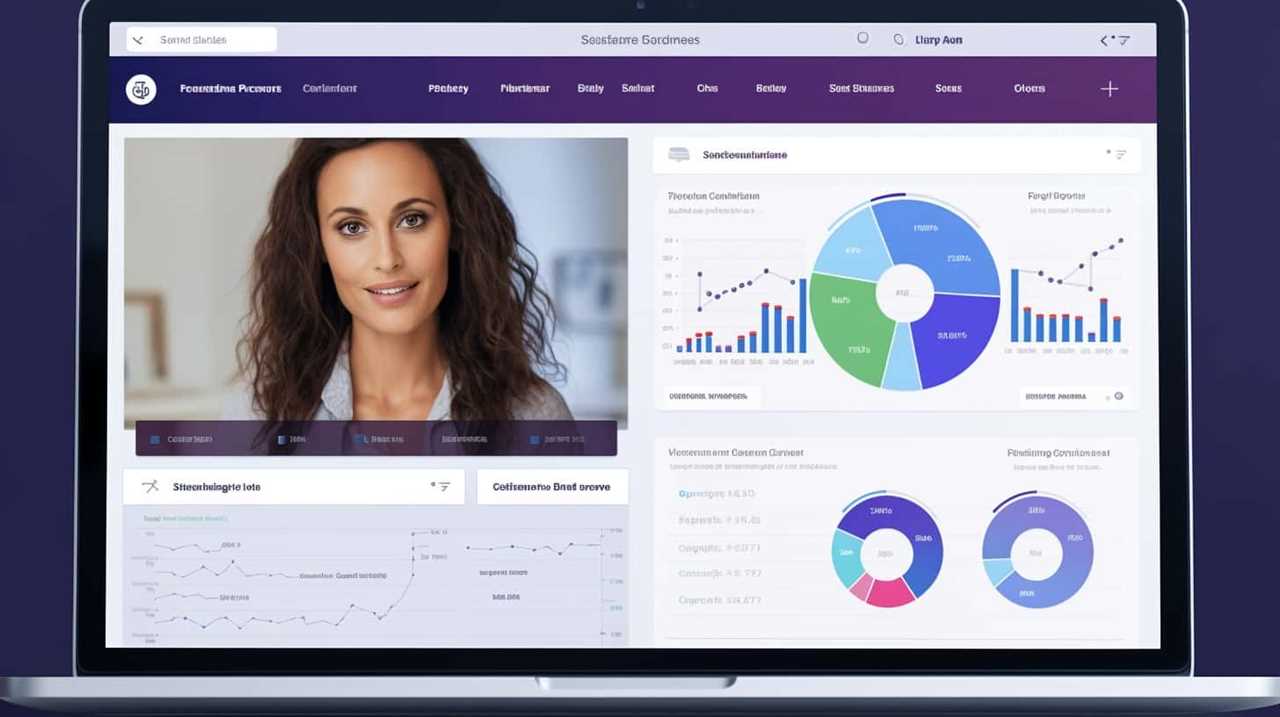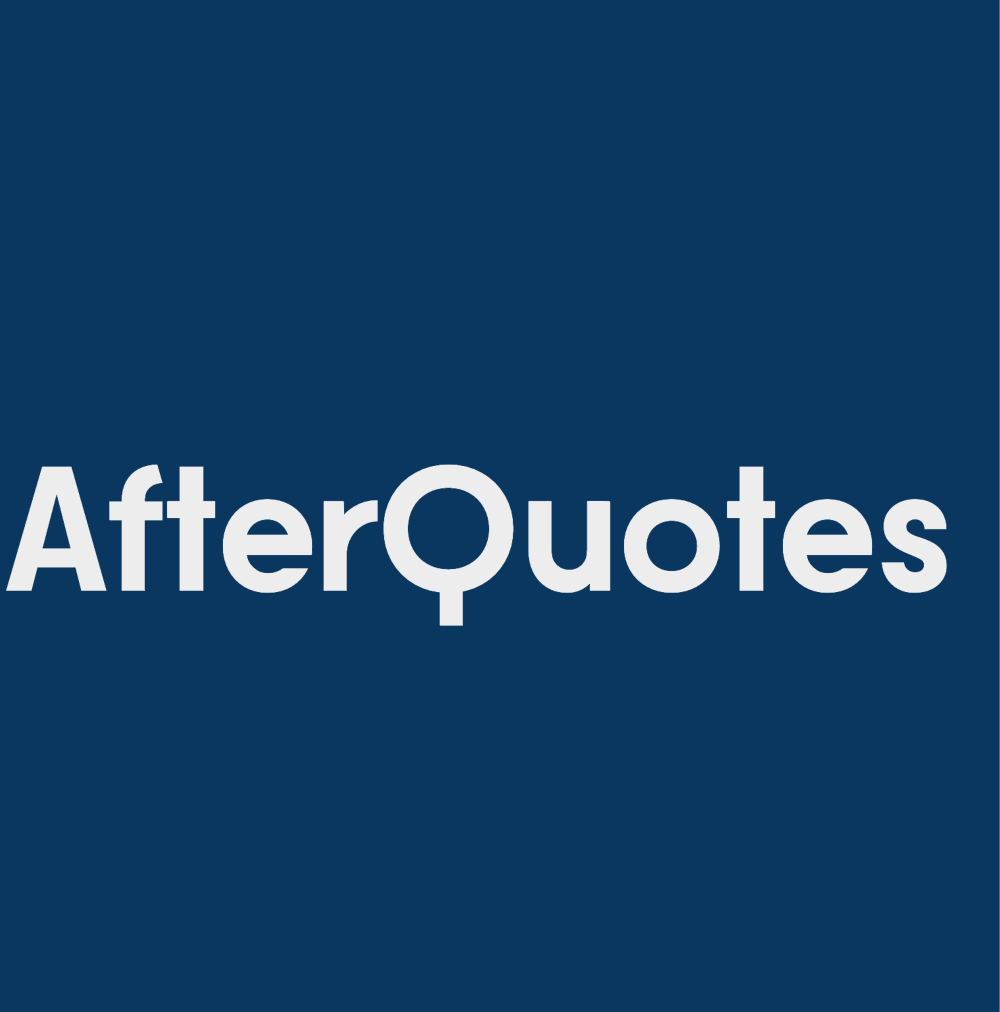Investing Quotations
14 Tips for Assessing Stock Economic Moats

Are you a smart investor aiming to improve your skills in evaluating stocks? Search no more! This guide offers you 14 essential tips for analyzing stock economic moats.
Now, you might be thinking, ‘Why should I bother evaluating economic moats?’ Well, let us tell you, understanding these moats is essential for identifying companies with sustainable competitive advantages. By analyzing industry structure, barriers to entry, pricing power, scale and efficiency, management quality, and financial health, you’ll gain valuable insights into a company’s long-term potential.
With our expert tips, you’ll be equipped with the knowledge to make informed investment decisions. So, let’s dive in and master the art of assessing stock economic moats together!
Key Takeaways
- Economic moats help identify companies with sustainable competitive advantages such as brand strength, cost advantages, network effects, and switching costs.
- Competitive advantages give a company an edge over competitors through differentiation, cost advantages, high switching costs, and network effects.
- Analyzing industry structure and the competitive landscape helps understand market players, barriers to entry, and the intensity of competition.
- Factors to consider when evaluating economic moats include market concentration analysis, barriers to entry, pricing power, customer switching costs, and competitive advantage analysis.
Understanding Economic Moats
We will now delve into our understanding of economic moats. Economic moats refer to the competitive advantage analysis that helps investors identify companies with long-term sustainable advantages over their competitors. These advantages create barriers to entry, making it difficult for new players to enter the market and challenge the company’s dominance. As investors, it’s crucial to evaluate executive decision making in order to assess the strength of a company’s economic moat.
When assessing a company’s economic moat, we analyze various factors such as brand strength, cost advantages, network effects, and switching costs. A strong brand can give a company pricing power and customer loyalty, making it difficult for competitors to gain market share. Cost advantages, such as economies of scale or proprietary technology, can create barriers that new entrants find hard to overcome.
Network effects occur when the value of a product or service increases as more people use it. This creates a positive feedback loop, making it challenging for competitors to attract customers away from the established company. Switching costs, on the other hand, refer to the expenses or inconveniences customers face when switching from one product or service to another. High switching costs can deter customers from switching to a competitor, giving the established company a competitive advantage.
Identifying Competitive Advantages
To identify competitive advantages, we evaluate key factors that give a company an edge over its competitors. By identifying unique offerings and evaluating market share, we can gain insights into a company’s competitive position. Here are four important factors to consider:
- Differentiation: Companies with competitive advantages often have unique offerings that set them apart from their competitors. This could be a patented technology, a strong brand, or exclusive distribution channels. By identifying these unique offerings, we can assess the extent to which a company’s products or services are differentiated in the market.
- Cost Advantage: Companies that can produce and deliver their products or services at a lower cost than their competitors have a significant competitive advantage. This can be achieved through economies of scale, efficient production processes, or access to low-cost inputs. Evaluating a company’s cost advantage can provide insights into its ability to maintain profitability and pricing power.
- Switching Costs: Switching costs refer to the costs incurred by customers when switching from one product or service provider to another. Companies that have high switching costs enjoy a competitive advantage as customers are less likely to switch to a competitor. By evaluating the extent of switching costs, we can assess the level of customer loyalty and the durability of a company’s competitive advantage.
- Network Effects: Network effects occur when the value of a product or service increases as more people use it. Companies that benefit from network effects have a strong competitive advantage as it becomes difficult for new entrants to attract users. By evaluating the presence and strength of network effects, we can assess a company’s ability to maintain market share and fend off competition.
Analyzing Industry Structure
When analyzing industry structure, there are several key points to consider.
First, it’s important to conduct a competitive landscape assessment to understand the players in the market and their respective market shares. This assessment can help identify potential barriers to entry and determine the level of market concentration.
Competitive Landscape Assessment
Assessing the competitive landscape involves analyzing the structure of the industry. To conduct a thorough competitive landscape analysis, it’s essential to assess the level of industry competition. Here are four key factors to consider:
- Market structure: Evaluate the number of competitors and their market share. Are there dominant players or is the market fragmented?
- Barriers to entry: Assess the obstacles that new entrants face. Are there significant barriers such as high capital requirements or strong brand loyalty?
- Competitive rivalry: Analyze the intensity of competition among existing players. Are they engaged in price wars or do they differentiate themselves through product innovation?
- Industry trends: Stay updated on technological advancements, regulatory changes, and market trends that may impact competition.
Barriers to Entry
We analyze industry structure by assessing the barriers to entry. When evaluating a company’s economic moat, understanding the barriers that prevent competitors from entering the market is crucial.
Barriers to entry can take various forms, such as regulatory restrictions and market share. Regulatory restrictions can include government regulations, licenses, and permits that limit new entrants. These restrictions can create a high barrier to entry, as complying with regulations can be time-consuming and costly.
Market share is another important factor to consider. If a company already has a significant market share, it becomes difficult for new entrants to gain traction and compete effectively.
Analyzing these barriers allows us to determine the sustainability of a company’s competitive advantage and its potential for long-term profitability.
Market Concentration Analysis
To evaluate industry structure and assess market concentration, we analyze the level of market share held by dominant players. This market analysis allows us to understand the competitive landscape and identify potential opportunities or risks.
When conducting competitor analysis, we consider several factors:

- Market share: We examine the percentage of total market sales or revenue that each dominant player holds. This helps us gauge the level of concentration and the market power of these players.
- Industry concentration: We assess the number and size of competitors in the industry. A highly concentrated market with a few dominant players may indicate a higher barrier to entry.
- Competitive rivalry: We analyze the intensity of competition among players, including pricing strategies, product differentiation, and marketing efforts.
- Market trends: We stay updated on market dynamics and shifts in consumer preferences to anticipate changes in industry structure.
Understanding market concentration and competitor analysis provides valuable insights into the competitive landscape and helps us make informed investment decisions.
Moving forward, let’s discuss the next aspect of assessing stock economic moats: barriers to entry.
Assessing Barriers to Entry
When evaluating stock economic moats, it’s important to consider the barriers that prevent new entrants from easily accessing the market. These barriers play a crucial role in determining a company’s ability to maintain a competitive advantage and sustain its profitability over the long term.
To assess the barriers to entry, a thorough competitive landscape analysis and market concentration analysis are essential.
A competitive landscape analysis examines the existing players in the market and their respective market shares. It helps identify the level of competition and the dominance of certain companies. If the market is highly concentrated with a few dominant players, it suggests a strong barrier to entry. These established companies benefit from economies of scale, brand recognition, and established distribution networks, making it difficult for new entrants to compete effectively.
Market concentration analysis further supports the assessment of barriers to entry by analyzing the concentration ratio, which measures the combined market share of the largest companies in the industry. A higher concentration ratio indicates a higher barrier to entry due to the market power of these dominant companies.
Evaluating Pricing Power
One key factor to consider in assessing a company’s economic moat is its ability to exercise pricing power. Evaluating a company’s pricing power is crucial in determining its competitive advantage and long-term sustainability. Here are four key aspects to consider when evaluating pricing power:
- Market dominance: A company with strong pricing power often holds a dominant position in its market, allowing it to set prices without facing significant competition. This can be evidenced by high market share, barriers to entry, and limited substitutes.
- Brand strength: A strong brand gives a company the ability to command premium pricing and maintain customer loyalty. Brands that are trusted, recognized, and associated with quality have a greater pricing power advantage.
- Cost advantages: Companies with lower production costs or unique cost structures have the potential to offer competitive pricing while maintaining healthy profit margins. This cost advantage can stem from economies of scale, efficient operations, or proprietary technologies.
- Customer switching costs: When customers face high costs or inconveniences when switching to alternative products or services, a company gains pricing power. This can be achieved through contractual agreements, proprietary software, or specialized knowledge.
Evaluating a company’s pricing power is a critical component of assessing its competitive advantage and long-term profitability. By considering market dominance, brand strength, cost advantages, and customer switching costs, investors can gain insights into a company’s ability to maintain pricing power and sustain its economic moat.
Examining Customer Switching Costs
When evaluating a company’s economic moat, it’s crucial to examine the impact of high customer switching costs. High switching costs can create a competitive advantage for a company, as they make it difficult and costly for customers to switch to a competitor’s product or service.
Impact of High Costs
We have found that assessing the impact of high costs on economic moats requires a careful examination of customer switching costs. When evaluating the profitability of a company, it’s crucial to consider the costs associated with customers switching to a competitor. Here are four key points to consider when assessing the impact of high costs:
- Level of investment: Determine the amount of time, money, and effort required for customers to switch to a competitor. Higher switching costs can act as a barrier, reducing the likelihood of customers leaving.
- Lock-in effects: Assess whether customers are locked into long-term contracts or have made significant investments in the company’s products or services. This can create a strong moat, making it difficult for customers to switch.
- Customer loyalty: Evaluate the level of customer loyalty and satisfaction. A strong relationship between the company and its customers can mitigate the impact of high costs and reduce the likelihood of switching.
- Competitive landscape: Analyze the competitiveness of the market and the availability of alternative options. If there are limited alternatives or if competitors have similar high costs, the impact on the economic moat may be minimal.
Competitive Advantage Analysis
To thoroughly analyze a company’s competitive advantage, it is essential to examine the impact of customer switching costs. Customer switching costs refer to the expenses or difficulties a customer incurs when switching from one company’s product or service to another. By understanding the market position of a company and evaluating its strategic partnerships, investors can gain insights into the strength of a company’s customer switching costs and its competitive advantage.
| Understanding Market Position | Evaluating Strategic Partnerships | Impact on Competitive Advantage |
|---|---|---|
| Assessing market share and growth potential | Examining partnerships with key suppliers or distributors | Higher customer switching costs lead to a stronger competitive advantage |
| Identifying barriers to entry for new competitors | Analyzing collaborations with industry leaders | Greater difficulty for customers to switch to competitors |
| Evaluating customer loyalty and brand recognition | Assessing the impact of partnerships on cost structure | Increased customer retention and reduced price sensitivity |
Investigating Network Effects
Investigating network effects involves analyzing the impact of interconnectedness on a company’s competitive advantage. Network effects occur when the value of a product or service increases as more people use it, creating a positive feedback loop that strengthens the company’s market position.
When assessing network effects, it’s important to consider the following:
- Market share expansion: Network effects enable companies to rapidly expand their market share as more users join the network. This can lead to a virtuous cycle where increased market share attracts even more users, further solidifying the company’s competitive advantage.
- High switching costs: Network effects create barriers for users to switch to competing products or services. The more interconnected a network becomes, the more difficult it’s for users to leave, increasing customer loyalty and reducing churn rates.
- Network effect sustainability: It’s crucial to evaluate the sustainability of network effects. Some network effects may be more fleeting, while others can create long-lasting competitive advantages. Understanding the underlying factors that contribute to the sustainability of network effects is essential for accurate assessment.
- Competitive landscape: Assessing the competitive landscape is crucial in understanding the strength of a company’s network effects. Analyzing the size and reach of competing networks can provide insights into potential threats or opportunities.
As we transition to the next section on reviewing intellectual property protection, it’s important to note that network effects alone may not guarantee a sustainable competitive advantage. Intellectual property protection can further fortify a company’s moat by safeguarding its innovations and preventing competitors from replicating its success.
Reviewing Intellectual Property Protection
When evaluating a company’s economic moat, it is important to delve into the level of intellectual property protection in place. Intellectual property, such as patents and copyrights, can provide a significant advantage for a company by safeguarding its innovative ideas and unique creations.
To assess a company’s intellectual property protection, it is essential to consider factors such as the number and quality of patents it holds, the strength of its copyright portfolio, and any ongoing legal disputes related to intellectual property infringement. A thorough analysis of these factors can help investors gauge the level of protection a company has and its ability to maintain a competitive edge in the market.
To visualize this assessment, let’s look at a table illustrating the different aspects of intellectual property protection for two hypothetical companies:
| Company | Number of Patents | Quality of Copyrights | Ongoing Legal Disputes |
|---|---|---|---|
| Company A | 100 | High | None |
| Company B | 50 | Medium | 2 |
In this example, Company A has a higher number of patents and stronger copyright portfolio, indicating a more robust intellectual property protection strategy compared to Company B. Additionally, the absence of ongoing legal disputes suggests a lower risk of intellectual property infringement.
Understanding a company’s intellectual property protection is crucial as it can be a significant driver of its long-term profitability and sustainability. A solid intellectual property strategy can deter competitors, safeguard market share, and provide a foundation for future growth.
Transitioning to the next section, scrutinizing cost advantages, let’s explore how a company’s ability to achieve cost efficiencies can contribute to its economic moat.
Scrutinizing Cost Advantages
When evaluating a company’s cost advantages, it’s important to consider their competitive pricing strategies and sustainable cost structures.
Competitive pricing strategies can give a company an edge in the market by attracting customers with lower prices.
Additionally, sustainable cost structures allow a company to maintain lower costs over the long term, leading to higher profitability.
Competitive Pricing Strategies
We can assess competitive pricing strategies by scrutinizing the cost advantages they offer. When evaluating a company’s pricing strategy, it’s important to consider the following factors:

- Customer Loyalty Programs: Companies that offer customer loyalty programs can create a competitive advantage by incentivizing repeat purchases and fostering customer loyalty. These programs can help attract and retain customers, leading to increased sales and market share.
- Dynamic Pricing Strategies: Dynamic pricing strategies involve adjusting prices in real-time based on factors such as demand, competition, and customer behavior. This allows companies to optimize their pricing and maximize revenue. By utilizing dynamic pricing, companies can respond to market conditions and gain a competitive edge.
- Cost Leadership: Companies that have lower production costs compared to their competitors can adopt a cost leadership strategy. This allows them to offer products or services at lower prices, attracting price-sensitive customers and gaining market share.
- Economies of Scale: Companies that benefit from economies of scale can achieve cost advantages by spreading their fixed costs over a larger production volume. This enables them to lower their per-unit production costs and offer competitive prices.
Sustainable Cost Structures
To assess a company’s sustainable cost structures and scrutinize its cost advantages, we focus on analyzing the efficiency and effectiveness of its cost management strategies. Sustainable growth and maintaining a competitive advantage are essential for long-term success in the stock market.
A company with a sustainable cost structure can achieve consistent profitability while minimizing expenses. When evaluating a company’s cost management strategies, it’s important to consider factors such as economies of scale, operational efficiency, and the ability to control costs without compromising quality.
Gauging Brand Strength
Assessing the strength of a brand is crucial when evaluating stock economic moats. A strong brand can provide a company with a competitive advantage and contribute to its long-term success.
To gauge brand strength, consider the following factors:
- Brand Loyalty: Measure the level of customer loyalty and repeat purchases. A brand with a strong following and high customer retention is more likely to have a durable economic moat.
- Customer Perception: Analyze customer reviews, surveys, and feedback to understand how the brand is perceived in the market. Positive customer perception indicates a strong brand that can withstand competition.
- Brand Awareness: Evaluate the brand’s visibility and recognition among consumers. A widely recognized brand has a greater potential for growth and market dominance.
- Differentiation: Assess the brand’s unique selling proposition and how it sets itself apart from competitors. A brand that offers something distinct and valuable to customers is more likely to maintain a competitive advantage.
By considering these factors, investors can gain insights into a company’s brand strength and its potential to sustain long-term profitability.
Considering Scale and Efficiency
When evaluating stock economic moats, it’s important to take into account the company’s scale and efficiency. Assessing market share is crucial in determining a company’s scale. A larger market share indicates a stronger position in the industry and a higher barrier to entry for competitors. It signifies that the company has a significant customer base and can leverage its size and resources to maintain its competitive advantage.
Evaluating operational efficiency is equally important. Efficient companies are able to minimize costs, optimize processes, and deliver products or services in a timely manner. They’re able to achieve economies of scale, which can lead to higher profitability and a stronger economic moat. Additionally, efficient companies are better equipped to adapt to market changes and withstand economic downturns.
Assessing Management Quality
When assessing management quality, it’s crucial to consider the impact of leadership on a company’s performance. Evaluating executive decision-making is a key aspect of determining the effectiveness of management.
Strong leadership can greatly contribute to a company’s long-term success, making it an important factor to consider when assessing a stock’s economic moat.
Leadership Impact on Performance
Our evaluation of a company’s management quality is crucial for assessing the leadership impact on performance. Effective leadership plays a significant role in driving a company’s success and can have a direct influence on its financial performance.
When evaluating management quality, we consider the following factors:
- Vision and Strategy: A strong leadership team should have a clear vision for the company’s future and a well-defined strategy to achieve its goals.
- Execution Skills: It’s essential to assess the management’s ability to execute the company’s strategy effectively, making timely and informed decisions.
- Talent Management: A competent leadership team should be capable of attracting, developing, and retaining top talent within the organization.
- Stakeholder Relations: Good management quality involves maintaining positive relationships with stakeholders, including employees, customers, and shareholders.
Analyzing these aspects allows us to assess the leadership impact on a company’s performance and make informed investment decisions.
Evaluating Executive Decision-Making
To evaluate management quality, we assess executive decision-making and its impact on a company’s performance. One key aspect to consider is the effectiveness of their strategic planning. Evaluating strategic planning involves analyzing the company’s long-term goals, the alignment of these goals with the industry landscape, and the ability of management to adapt and foresee potential challenges.
A strong strategic plan demonstrates a clear vision and the ability to capitalize on market opportunities. Another important factor is measuring risk management. This involves evaluating the management team’s ability to identify and mitigate risks, such as financial risks, operational risks, and industry-specific risks.
A robust risk management framework indicates a proactive and responsible approach to decision-making, safeguarding the company’s financial health and reputation. By thoroughly evaluating strategic planning and risk management, we can gain insights into the quality of executive decision-making and its impact on a company’s performance.
Importance of Strong Management
Assessing management quality is crucial in evaluating the importance of strong management in stock economic moats. When analyzing management, it’s important to consider the following:
- Communication Skills: Strong managers possess effective communication skills, allowing them to clearly convey their vision, goals, and expectations to their team. This ensures that everyone is aligned and working towards a common objective.
- Corporate Culture: Management plays a pivotal role in shaping the corporate culture of a company. A positive and inclusive culture fosters employee engagement, innovation, and productivity, ultimately driving long-term success.
- Strategic Decision-Making: Strong managers are adept at making strategic decisions that align with the company’s long-term goals. Their ability to analyze market trends, identify opportunities, and mitigate risks is vital for sustainable growth.
- Talent Development: Effective managers prioritize the development and growth of their team members. By providing mentorship, training, and opportunities for advancement, they create a high-performing workforce that can drive the company forward.
Assessing these key aspects of management quality allows investors to gauge the strength of a company’s leadership and its ability to maintain a competitive advantage in the market.
Analyzing Financial Health
When analyzing financial health, we need to look into the company’s cash flow and debt levels. Analyzing cash flow is crucial because it indicates the ability of a company to generate consistent and sufficient cash to cover its expenses and invest in future growth. Positive cash flow is a good sign, as it shows that the company’s operations are generating enough money to cover its obligations. On the other hand, negative cash flow may indicate that the company is struggling to manage its expenses or facing difficulties in generating revenue.
Evaluating debt levels is also important when assessing a company’s financial health. High levels of debt can be a cause for concern, as it increases the risk for the company and its shareholders. It’s important to look at the company’s debt-to-equity ratio and compare it with industry peers to determine if the company is carrying a manageable amount of debt. Excessive debt can lead to financial instability, as it may limit the company’s ability to invest in growth opportunities or meet its financial obligations.
Summarizing Moat Assessment Results
After evaluating the company’s financial health, we can now summarize the results of our moat assessment. Based on our analysis, here are the key findings:
- Competitive Advantage: We’ve determined the presence of a strong economic moat for the company. This is evident from factors such as barriers to entry, brand recognition, and customer loyalty. The company enjoys a favorable position compared to its competitors, which contributes to its sustainable competitive advantage.
- Industry Position: Our assessment indicates that the company holds a dominant position within its industry. It has a significant market share and demonstrates the ability to maintain its leadership over time. This further strengthens its economic moat and solidifies its competitive advantage.
- Growth Potential: The moat assessment reveals positive indicators for the company’s growth potential. This is supported by factors such as expanding market opportunities, innovative product offerings, and a strong track record of revenue growth. The company’s competitive position positions it well to capitalize on future market trends and drive sustainable growth.
- Risks and Challenges: Although the company possesses a strong economic moat, our assessment also highlights certain risks and challenges. These include potential disruptions from new technologies, regulatory changes, and intense competition. It’s important to monitor these factors closely to ensure the company’s competitive position remains intact.
Frequently Asked Questions
How Do Economic Moats Impact a Company’s Financial Health?
Economic moats have a significant impact on a company’s financial health. They provide a competitive advantage, which leads to higher profitability. By creating barriers to entry, moats help protect a company’s market share and ensure long-term success.
What Are Some Potential Risks Associated With Assessing Barriers to Entry?
Assessing risks in the competitive landscape is crucial when evaluating barriers to entry. Potential risks may include intense competition, changing market dynamics, and disruptive technologies. These factors can impact a company’s ability to maintain a sustainable economic moat.
How Does Brand Strength Contribute to a Company’s Economic Moat?
Brand strength acts as a fortress around a company, nurturing brand loyalty among customers and conferring a competitive advantage. By establishing a strong brand, a company can build a lasting economic moat that shields it from competition.
Can You Provide Examples of Companies With Strong Network Effects?
Examples of companies with strong network effects include social media platforms like Facebook and Twitter, e-commerce giants like Amazon, and ride-sharing services like Uber. Network effects play a crucial role in these companies’ competitive advantage by creating a virtuous cycle of user growth and engagement.
What Are Some Key Factors to Consider When Evaluating Management Quality in Relation to Economic Moats?
When evaluating management quality in relation to economic moats, we consider evaluation techniques and the impact of leadership. These factors help us assess the strength and sustainability of a company’s competitive advantage.
How Can Investors Use Economic Moat Analysis to Assess Stock Performance?
When evaluating stock performance, investors can gain valuable insights on economic moat. By analyzing a company’s competitive advantage and barriers to entry, investors can assess its long-term potential. Companies with strong economic moats are more likely to withstand competition and demonstrate stable stock performance over time.
Conclusion
In conclusion, assessing stock economic moats is crucial for investors to make informed decisions. By understanding competitive advantages, industry structure, barriers to entry, pricing power, scale and efficiency, management quality, and financial health, investors can determine the strength of a company’s moat.
This analysis allows investors to identify companies with sustainable competitive advantages and potential for long-term success.
So, don’t miss out on the opportunity to ‘separate the wheat from the chaff’ and invest wisely in companies with strong economic moats.
Lauren’s talent in writing is matched by her passion for storytelling. Her love for books and deep understanding of culture and entertainment add a distinct flavor to her work. As our media and press contact, Lauren skillfully bridges the gap between afterQuotes and the broader media landscape, bringing our message to a wider audience.
Investing Quotations
Why Does Compound Interest Supercharge Retirement Savings?

Are you geared up to unlock the secret behind significantly boosting your retirement funds? Look no further, because compound interest is here! This magical principle can transform a small savings into a vast fortune over time.
By harnessing the power of compounding, we can maximize our savings and unlock exponential growth. But how does it work? In this guide, we’ll explore the ins and outs of compound interest and how it can supercharge our retirement savings.
So buckle up and get ready to embark on a journey towards financial mastery. With the right strategies and a little bit of patience, we can leverage compound interest to build the retirement of our dreams.
Let’s dive in!
Key Takeaways
- Compound interest allows retirement savings to grow exponentially over time.
- Starting early and consistently contributing to retirement accounts is crucial for maximizing the benefits of compound interest.
- Diversifying investments and choosing investments with higher compound interest rates can lead to greater returns.
- Time is a critical factor in accelerating retirement savings and harnessing the power of compound interest.
Definition of Compound Interest
Compound interest is the exponential growth of our retirement savings over time due to the accumulation of interest on both the initial investment and the interest already earned. To put it simply, compound interest is the magic that makes our money work harder for us.
When we invest our money, it earns interest. And with compound interest, that interest is added back into our investment, allowing it to grow even more. This compounding effect is what makes compound interest such a powerful tool in retirement planning.
Understanding the definition of compound interest is crucial for anyone who wants to maximize their retirement savings. By harnessing the power of compound interest, we can make our money work for us and multiply our initial investment over time. The importance of compound interest in retirement planning can’t be overstated. It allows us to build a substantial nest egg by leveraging the growth potential of our savings.
As we delve deeper into the topic of compound interest, we’ll explore the power of compounding over time. This concept will further highlight the incredible benefits of compound interest and how it can significantly impact our retirement savings.
The Power of Compounding Over Time
Maximizing our retirement savings involves harnessing the exponential growth potential of compounding over time. Compounding is the process by which our savings grow not only based on our initial investment, but also on the accumulated interest or returns earned over time. The benefits of compounding are twofold: it allows our savings to grow at an accelerated rate, and it also enables us to earn interest on the interest we’ve already earned.
The impact of compounding on savings can be significant. By reinvesting our earnings, we can take advantage of the compounding effect, which can greatly amplify our returns. Over time, even small contributions can grow into substantial sums, thanks to the power of compounding. This is because the longer our money is invested, the more time it has to grow and accumulate returns.
To illustrate the impact of compounding, let’s consider an example. Suppose we start saving for retirement at age 30 and consistently contribute a fixed amount each month. With compounding, our savings can grow significantly by the time we reach retirement age, compared to if we hadn’t taken advantage of compounding. The earlier we start saving, the greater the impact of compounding on our savings.
Maximizing Retirement Savings With Compound Interest
To optimize our retirement savings, we can leverage the power of compound interest. By understanding how compound interest works and implementing strategies to maximize its returns, we can significantly enhance our retirement nest egg.

Here are two key ways to make the most of compound interest:
- Invest early and consistently:
- The earlier we start investing, the longer our money has to grow through compounding. This means that by starting early, even with small contributions, we can benefit from the power of compounding over a longer period.
- Consistency is also vital in maximizing compound interest returns. Regularly contributing to our retirement accounts ensures a steady flow of funds that can compound over time and generate significant growth.
- Choose investments that offer higher compound interest rates:
- Compound interest is more effective when applied to investments that offer higher returns. By carefully selecting investment vehicles such as stocks, bonds, and mutual funds, we can potentially earn higher compound interest rates and accelerate our retirement savings.
- It’s important to understand the difference between compound interest and simple interest. Compound interest not only earns interest on the initial investment but also on the accumulated interest over time. This amplifies the growth potential compared to simple interest, which only earns interest on the principal amount.
How Compound Interest Accelerates Wealth Growth
Compound interest is like a magical money multiplier that can greatly accelerate wealth growth.
By allowing your money to grow over time, you can take advantage of the power of compounding.
The longer you have to invest, the more time your money has to multiply, and the more wealth you can accumulate.
It’s like a snowball effect, where your money starts small but grows bigger and bigger over time.
Magical Money Multiplication
Compound interest has the power of magical money multiplication, especially when it comes to retirement planning. Here are two ways in which compound interest supercharges wealth growth:
- Exponential Growth: Compound interest allows your money to grow exponentially over time. As the interest compounds, you earn not only on your initial investment but also on the accumulated interest. This leads to a snowball effect, where your money multiplies at an increasing rate.
- Time Advantage: The longer you let compound interest work its magic, the greater the impact on your wealth. Starting early and staying invested for a longer period of time gives your money more time to grow and multiply.
Understanding the power of compound interest and its role in money multiplication is crucial for successful retirement planning. But remember, time is money, and we’ll explore the significance of time in the next section.
Time Is Money
As we delve deeper into the topic of compound interest’s impact on wealth growth, it becomes evident that time plays a crucial role in accelerating our retirement savings. Effective time management and a solid understanding of financial literacy are key factors in maximizing the benefits of compound interest.
The longer we’ve to invest, the more time our money has to grow through the power of compounding. By starting early and consistently contributing to our retirement accounts, we allow our investments to accumulate and generate returns over an extended period. This allows us to take advantage of the exponential growth potential of compound interest.
However, it’s not just about investing early; it’s also about making informed decisions and managing our finances wisely. Developing financial literacy skills empowers us to make sound investment choices and optimize our retirement savings.
Snowball Effect of Interest
By understanding the snowball effect of interest, we can see how compound interest accelerates our wealth growth over time. Compound interest is the compounding effect where the interest earned on an investment is added to the principal, allowing for exponential growth. Here’s why it’s so powerful:
- Time: The longer we leave our money invested, the more time it has to compound and grow exponentially.
- Reinvestment: The interest earned is reinvested, generating even more interest and further boosting our wealth.
Compound interest has a snowball effect, where the initial investment grows gradually but then gains momentum as interest continually compounds. This compounding effect leads to exponential wealth growth, making it a crucial factor in long-term financial success.
Examples of Compound Interest in Action
When it comes to compound interest in action, there are several key points that illustrate its power.
First, long-term investment growth is a prime example of how compound interest can supercharge retirement savings. By allowing your investments to grow over a long period of time, you can take advantage of the compounding effect and see your wealth multiply.
Additionally, the snowballing effect of interest is another compelling example. As your initial investment earns interest, that interest is added to your principal, resulting in even more interest earned over time.
Long-Term Investment Growth
We can see the power of compound interest in action when our long-term investments consistently grow over time. By employing effective long-term investment strategies, we can harness the compounding effect on our savings, allowing them to multiply exponentially.
Here are two examples that demonstrate the significance of long-term investment growth:
- Stock market investments: Investing in a diversified portfolio of stocks has historically yielded significant returns over the long term. The compounding effect allows our investments to grow exponentially as the returns are reinvested, leading to substantial wealth accumulation.
- Real estate investments: Owning properties for an extended period can result in substantial growth. As property values appreciate and rental income is reinvested, the compounding effect augments our wealth exponentially, leading to significant financial gains.
Snowballing Effect of Interest
To witness the snowballing effect of interest, one must observe the exponential growth that occurs when our savings continually accumulate compound interest over time. This compounding interest benefits us by maximizing compound growth, allowing our money to work harder and generate more wealth. Let’s take a look at some examples of compound interest in action:
| Year | Initial Investment | Interest Earned | Total Balance |
|---|---|---|---|
| 1 | $10,000 | $500 | $10,500 |
| 2 | $10,500 | $525 | $11,025 |
| 3 | $11,025 | $551.25 | $11,576.25 |
| 4 | $11,576.25 | $578.81 | $12,155.06 |
As you can see from the table, the interest earned each year is added to the initial investment, resulting in a higher total balance. Over time, this snowball effect becomes more significant, leading to substantial growth in our savings. By understanding and harnessing the power of compound interest, we can set ourselves on a path towards financial security and a comfortable retirement.
Maximizing Retirement Savings
Continuing our exploration of the snowballing effect of compound interest, let’s now delve into maximizing our retirement savings through examples of compound interest in action.
Here are two investment strategies that can help us maximize returns and supercharge our retirement savings:
- Diversify your portfolio: By spreading your investments across different asset classes, such as stocks, bonds, and real estate, you can reduce risk and potentially increase returns. This strategy allows you to take advantage of the growth potential of different sectors, while minimizing the impact of any single investment’s performance.
- Start early and contribute regularly: The power of compound interest is magnified when you give it more time to work. By starting to save for retirement as early as possible and consistently contributing to your retirement accounts, you can take advantage of the compounding effect over a longer period. This disciplined approach can significantly boost your retirement savings in the long run.
The Role of Interest Rates in Retirement Savings
As interest rates play a crucial role in retirement savings, understanding their impact is essential. Interest rates can have a significant effect on retirement planning, particularly when it comes to the growth of savings and the ability to combat inflation. When interest rates are low, it becomes more challenging to generate substantial returns on investments, which can hinder the growth of retirement savings. On the other hand, higher interest rates provide an opportunity for increased returns and enhanced retirement planning.
To illustrate the impact of interest rates on retirement savings, let’s consider a hypothetical scenario. Assume an individual invests $100,000 in a retirement account and plans to retire in 30 years. The table below demonstrates the growth of their savings under different interest rate scenarios:
| Interest Rate | Total Savings after 30 years |
|---|---|
| 2% | $181,136 |
| 4% | $324,340 |
| 6% | $574,349 |
| 8% | $1,006,266 |
| 10% | $1,744,940 |
From the table, it is evident that even a small increase in interest rates can lead to a significant difference in the total savings accumulated over time. This highlights the importance of considering interest rates when planning for retirement.
Understanding the role of interest rates in retirement savings is crucial for making informed investment decisions. By taking advantage of higher interest rates and implementing strategies that leverage compound interest, individuals can supercharge their retirement savings. In the next section, we will explore some strategies to maximize the benefits of compound interest for retirement planning.
Strategies to Leverage Compound Interest for Retirement
Let’s explore some strategies we can use to maximize the benefits of compound interest for our retirement planning.
- Start early: The key to leveraging compounding for early retirement is to start saving as soon as possible. The earlier you begin saving, the more time your money has to grow through the power of compound interest. Even small contributions made consistently over a long period can lead to significant wealth accumulation.
- Consistent contributions: Regularly contributing to your retirement savings is crucial for long-term wealth accumulation. By setting up automatic contributions from your paycheck or bank account, you ensure that you’re consistently adding to your retirement fund. This not only helps increase the principal amount but also maximizes the compounding effect over time.
- Invest in growth assets: To maximize the benefits of compound interest, consider investing in growth-oriented assets such as stocks or equity-based funds. While these investments come with some level of risk, they offer higher potential returns over the long term. By carefully diversifying your portfolio and staying invested for the long haul, you can harness the power of compounding to grow your retirement savings.
- Take advantage of employer matches: If your employer offers a retirement savings plan with a matching contribution, make sure to take full advantage of it. This is essentially free money that can significantly boost your retirement savings. Contribute at least enough to receive the maximum matching amount offered by your employer to leverage the benefits of compounding.
Common Misconceptions About Compound Interest
One common misconception about compound interest is that it only benefits those who’ve large sums of money to invest. While it’s true that having more money to invest can lead to greater returns, compound interest can benefit anyone who starts investing early and stays consistent. Compound interest is a powerful tool that allows your money to grow exponentially over time, regardless of the initial investment amount.
Another misconception is that compound interest is a surefire way to get rich quick. While compound interest can certainly help you build wealth over time, it isn’t a get-rich-quick scheme. It requires patience and discipline to see significant results. It’s important to understand that compound interest works best when given time to work its magic.

Furthermore, some people believe that compound interest is only relevant to retirement savings. While it’s true that compound interest can have a significant impact on your retirement savings, it can also be applied to other financial goals, such as saving for a down payment on a house or funding your child’s education.
Tips for Harnessing Compound Interest in Your Retirement Plan
To maximize the power of compound interest in our retirement plan, we should start investing early and consistently contribute to our savings over time. By harnessing compound interest, we can achieve significant growth in our retirement savings.
Here are some strategies to help us make the most of compound interest in our retirement plan:
- Start early: The earlier we start investing, the longer our money has to grow. Time is a crucial factor in compound interest, so it’s important to begin as soon as possible.
- Consistent contributions: Regularly contributing to our retirement savings allows us to take advantage of the compounding effect. By consistently adding to our investments, we can maximize our returns over time.
- Diversify our portfolio: Investing in a diversified portfolio spreads the risk and increases the potential for higher returns. By including a mix of stocks, bonds, and other assets, we can optimize our investment growth.
- Reinvest dividends and interest: Instead of cashing out dividends and interest earned on our investments, reinvesting them allows us to compound our returns. This strategy can significantly boost our retirement savings.
- Monitor and adjust: It’s important to regularly review our retirement plan and make any necessary adjustments. As our financial situation changes, we should ensure our investment strategy aligns with our goals.
Frequently Asked Questions
How Does Compound Interest Differ From Simple Interest?
Compound interest differs from simple interest in that it not only earns interest on the initial amount invested but also on the accumulated interest. This supercharges retirement savings by allowing them to grow exponentially over time.
Are There Any Risks or Drawbacks Associated With Compound Interest?
There are risks and drawbacks associated with compound interest, but they are like raindrops in a storm. It’s important to be aware of potential fluctuations and inflation, but the long-term benefits far outweigh the short-term challenges.
Can Compound Interest Be Applied to Other Financial Goals Besides Retirement Savings?
Compound interest can definitely be applied to other financial goals besides retirement savings. It has numerous benefits, such as exponential growth and long-term wealth accumulation, making it an effective strategy for achieving various financial objectives.
Is It Possible to Calculate the Exact Amount of Compound Interest That Will Be Earned Over a Specific Period of Time?
Yes, it is possible to calculate the exact amount of compound interest earned over a specific period of time. By using the formula A = P(1 + r/n)^(nt), we can determine the benefits of compound interest.
Are There Any Restrictions or Limitations on How Much Money Can Be Contributed to a Retirement Account in Order to Benefit From Compound Interest?
There are contribution limits on retirement accounts, but they vary depending on the type of account and your age. Maximizing your contributions can supercharge your retirement savings by taking full advantage of compound interest.

How Can Compound Interest Impact Uncommon Journeys and Hidden Trails in Retirement Savings?
Compound interest can illuminate uncommon journeys in retirement savings by exponentially growing your investment over time. It ensures that every dollar saved today will have a greater impact in the future. This means exploring hidden trails in retirement can be a reality with the power of compounded returns on your side.
Conclusion
So, as we’ve learned, compound interest is this magical tool that can supercharge our retirement savings. It’s like having a secret weapon in the battle for financial security.
It may seem counterintuitive that something as simple as interest can have such a profound impact on our wealth, but that’s the beauty of it. By harnessing the power of compound interest, we can watch our retirement savings grow exponentially over time.
So why not take advantage of this incredible opportunity? Start investing wisely and let compound interest work its magic for you.
Lauren’s talent in writing is matched by her passion for storytelling. Her love for books and deep understanding of culture and entertainment add a distinct flavor to her work. As our media and press contact, Lauren skillfully bridges the gap between afterQuotes and the broader media landscape, bringing our message to a wider audience.
Investing Quotations
Why Do Emotions Drive Stock Market Decisions?

Ah, the marvel of human emotions and their incontestable impact on the stock market! How come we allow our emotions to dictate our investment choices? Indeed, my fellow finance aficionados, let’s delve into this enigmatic occurrence together.
In our pursuit of mastery, we must delve into the depths of fear and greed, those two notorious culprits that often cloud our rationality. And let us not forget the cognitive biases that haunt our trading endeavors, nor the contagious nature of emotions in the market.
Ah, overconfidence and herd mentality, how they manipulate our actions! But fear not, for there is hope in the form of emotional intelligence in investing.
So, fasten your seatbelts, dear colleagues, for we are about to unravel the enigma of why emotions reign supreme in the wild world of stock market decisions.
Key Takeaways
- Fear and greed play a significant role in driving stock market decisions, with fear leading to panic selling and greed leading to excessive risk-taking and speculative trading.
- Cognitive biases, such as overconfidence, can lead to poor investment decisions and potential losses. Traders should strive for a more objective and rational decision-making process.
- Emotional contagion, where individuals catch the emotions of those around them, can lead to market volatility and herd mentality. Developing emotional intelligence is crucial in navigating the market.
- The impact of emotional contagion on stock market decisions can result in market bubbles, amplification of volatility, and rapid shifts in sentiment. Recognizing emotions and understanding their influence helps make rational decisions.
The Role of Fear and Greed
When it comes to stock market decisions, fear and greed play a pivotal role in shaping our actions. These two emotions have a profound impact on the choices we make when it comes to buying and selling stocks.
Fear driven decisions are characterized by a sense of panic and a desire to minimize losses. Investors driven by fear tend to sell their stocks quickly when they see prices falling, fearing that the decline will continue and result in substantial losses.
On the other hand, greed driven decisions are motivated by the desire for quick gains and high returns. Investors driven by greed often take on excessive risks, hoping to make significant profits in a short amount of time. They may engage in speculative trading strategies or invest in high-risk assets, disregarding the potential downside.
Understanding the role of fear and greed in stock market decision-making is essential for navigating the complexities of the market. These emotions can lead to irrational behavior and contribute to market volatility. Recognizing these tendencies and managing them effectively is crucial for successful trading.
However, it’s important to note that fear and greed are just two of the many cognitive biases that can influence our decision-making in the stock market. In the following section, we’ll explore other cognitive biases that traders commonly encounter and discuss their impact on investment decisions.
Cognitive Biases in Trading
One common cognitive bias in trading is the tendency for investors to exhibit overconfidence in their abilities. This bias can lead to a skewed decision-making process, as traders may overestimate their knowledge and underestimate the risks involved in their trades. As a result, they may take on excessive risks or fail to adequately assess the potential downsides of their investments.
To illustrate this point, let’s consider a hypothetical scenario where an overconfident trader is evaluating two investment opportunities: Company A and Company B. The trader believes that they have superior analytical skills and a deep understanding of the market. They are convinced that their predictions are accurate and that they can accurately assess the future performance of both companies.
| Investment Opportunity | Expected Return | Perceived Risk |
|---|---|---|
| Company A | 20% | Low |
| Company B | 10% | Moderate |
In this scenario, the trader’s overconfidence leads them to perceive Company A as having a lower risk and a higher expected return compared to Company B. However, in reality, Company A may have hidden risks or uncertainties that the trader failed to consider. This cognitive bias can result in poor investment decisions and potential losses.

Therefore, it is crucial for traders to be aware of their cognitive biases and strive for a more objective and rational decision-making process. By acknowledging the influence of emotions, fear, and uncertainty in trading, investors can make more informed and balanced investment choices.
Emotional Contagion in the Market
We are influenced by the emotions of others in the market due to emotional contagion. Emotional contagion is the phenomenon where individuals ‘catch’ the emotions of those around them, leading to a collective emotional state. In the stock market, this can have a significant impact on decision-making and market behavior.
Here are five key points to understand about emotional contagion in the market:
- Herd Mentality: Emotional contagion often leads to a herd mentality, where individuals in the market tend to follow the actions and decisions of the majority. This can result in the amplification of market volatility and the formation of market bubbles.
- Emotional Intelligence: Developing emotional intelligence is crucial in navigating the market. Being aware of one’s own emotions and understanding how they can be influenced by others can help investors make more rational and informed decisions.
- Mirror Neurons: Mirror neurons play a role in emotional contagion. These neurons in our brain fire both when we experience an emotion ourselves and when we observe someone else experiencing that emotion. This neural mechanism contributes to the spread of emotions in the market.
- Contagious Behavior: Emotional contagion can lead to contagious behavior, such as panic selling or euphoric buying. These actions can have a domino effect, influencing other market participants and causing rapid shifts in market sentiment.
- Feedback Loop: Emotional contagion creates a feedback loop in the market. As emotions spread among investors, they can influence market prices, which in turn affect the emotions of other investors. This cycle can perpetuate and amplify market movements.
Understanding emotional contagion and its impact on the market is crucial for investors seeking to make informed decisions. By recognizing the potential influence of others’ emotions and developing emotional intelligence, investors can better navigate the complexities of the stock market.
Overconfidence and Risk Taking
When it comes to investing, psychological biases can often lead to overconfidence and risk-taking behavior. This can have a significant impact on the overall market volatility.
Emotional decision making, driven by overconfidence, can cause investors to make irrational choices and disregard important information. Understanding these psychological biases and their effects on market behavior is crucial for making informed investment decisions.
Psychological Biases in Investing
While emotions play a significant role in driving stock market decisions, it’s important to recognize that psychological biases, such as overconfidence and risk-taking, also influence our investing choices. These biases can lead us to make irrational decisions and deviate from rational investment strategies.
Here are some key psychological biases that affect our investment behavior:

- Confirmation bias: We tend to seek information that confirms our pre-existing beliefs and ignore contradictory evidence. This can lead us to make biased investment decisions based on incomplete or inaccurate information.
- Loss aversion: We’re more sensitive to losses than gains, and this can cause us to take unnecessary risks in an attempt to avoid losses. This bias can lead to impulsive and irrational investment decisions.
Understanding and managing these psychological biases is crucial for successful investing. By being aware of our biases and employing rational decision-making strategies, we can make more informed and objective investment choices.
Emotional Decision Making
Our emotional decision-making in the stock market is often driven by overconfidence and a willingness to take risks. This impulsive trading behavior and irrationality in investing can have significant consequences on our portfolio performance. When we are overconfident, we tend to believe that our abilities and knowledge in the market are greater than they actually are. This can lead us to make hasty and ill-informed decisions, which often result in undesirable outcomes. Additionally, our willingness to take risks can be influenced by our emotions, causing us to disregard rational analysis and make choices based on gut feelings or short-term market fluctuations. To illustrate the impact of emotional decision-making, consider the following table:
| Scenario | Outcome | Emotion |
|---|---|---|
| Impulsive Trading | Losses due to buying/selling without proper analysis | Fear of missing out (FOMO) |
| Irrational Investment Decisions | Poor performance due to bias and lack of research | Overconfidence and greed |
| Emotional Rollercoaster | Volatility and stress from emotional responses | Anxiety and panic |
| Inconsistent Decision Making | Inability to stick to a long-term investment plan | Indecisiveness and emotional bias |
It is crucial to be aware of our emotional biases and strive for a disciplined and rational approach to investing.
Impact on Market Volatility
Emotional biases such as overconfidence and risk taking have a substantial impact on the volatility of the stock market. These biases are rooted in investor psychology and can greatly influence market sentiment.
Here are five key ways in which overconfidence and risk taking contribute to market volatility:
- Excessive optimism: Overconfident investors tend to overestimate their abilities and the potential returns of their investment decisions, leading to inflated market expectations.
- Herd mentality: When investors take excessive risks based on the actions of others, it can create a domino effect, amplifying market volatility.
- Ignoring warning signs: Overconfident investors may disregard potential risks and warning signals, leading to a lack of caution and increased market instability.
- Overtrading: Overconfident investors often engage in excessive buying and selling, which can result in erratic market movements and heightened volatility.
- Speculative bubbles: Overconfidence can drive investors to bid up the prices of certain assets beyond their intrinsic value, creating speculative bubbles that eventually burst, causing market turmoil.
Understanding the impact of emotional biases on market volatility is crucial for investors who seek to navigate the stock market with greater mastery. By recognizing and managing these biases, investors can make more informed and rational decisions, contributing to a more stable and predictable market.
Herd Mentality and Market Behavior
In the world of stock market decisions, we often find ourselves succumbing to the influence of herd mentality and its impact on market behavior. Herd mentality refers to the tendency of individuals to conform to the actions and opinions of a larger group. This behavioral phenomenon can have a profound effect on stock market dynamics, leading to increased volatility and potentially irrational decision-making.
One of the main drivers of herd mentality in the stock market is groupthink. This occurs when individuals within a group prioritize conformity and consensus over critical thinking and independent analysis. As a result, decisions are often based on the beliefs and actions of the majority, rather than on objective data and analysis.

Social influence is another factor that contributes to herd mentality in the stock market. People tend to rely on the opinions and actions of others to validate their own decisions. When a large number of investors start buying or selling a particular stock, it creates a sense of urgency and fear of missing out, further fueling the herd mentality.
The impact of herd mentality on market behavior can be significant. When a large number of investors make similar decisions based on groupthink and social influence, it can lead to exaggerated price movements and increased market volatility. This can result in market bubbles or crashes, as the actions of the herd become detached from the underlying fundamentals of the stocks being traded.
To mitigate the negative effects of herd mentality, it’s essential for investors to maintain a rational and independent mindset. By conducting thorough research and analysis, and by making decisions based on objective data rather than the actions of the crowd, investors can protect themselves from the pitfalls of herd mentality and make more informed and profitable stock market decisions.
Emotional Intelligence in Investing
As we delve further into the impact of herd mentality on stock market decisions, it’s important to explore the role of emotional intelligence in investing. Emotional intelligence refers to the ability to recognize, understand, and regulate our own emotions and those of others. In the context of investing, emotional intelligence plays a crucial role in decision making and emotional regulation.
Here are five key aspects of emotional intelligence in investing:
- Self-awareness: Being aware of our own emotions and how they can influence our investment decisions is essential. Recognizing when fear or greed is driving our actions allows us to make more rational choices.
- Emotional regulation: Emotionally intelligent investors are able to regulate their emotions effectively, avoiding impulsive decisions based on fear or excitement. They remain calm under pressure and stick to their investment strategies.
- Empathy: Understanding the emotions and motivations of other market participants helps investors anticipate market trends and make more informed decisions.
- Social skills: Emotional intelligence also involves the ability to communicate and collaborate effectively with others. Building networks and learning from experienced investors can enhance our decision-making abilities.
- Adaptability: Emotionally intelligent investors are flexible and open to new information. They can adjust their strategies based on changing market conditions and avoid being stuck in rigid thinking patterns.
Frequently Asked Questions
How Does the Role of Fear and Greed Impact Stock Market Decisions?
The role of anxiety and the impact of greed play a significant role in stock market decisions. Fear can drive investors to sell, while greed can lead to irrational exuberance and overvalued stocks.
What Are Some Common Cognitive Biases That Can Affect Trading Decisions?
Confirmation bias and anchoring bias are common cognitive biases that can affect trading decisions. We must understand their impact and how they influence our decision-making processes to become better traders.
How Does Emotional Contagion Occur in the Stock Market?
Emotional contagion in the stock market occurs when individuals are influenced by the emotions of others, particularly through social media. This phenomenon can lead to irrational decision-making and increased market volatility.

How Does Overconfidence Lead to Increased Risk-Taking in Investing?
Overconfidence in investing can lead to increased risk-taking, creating market bubbles and speculative trading. Emotions play a significant role in these decisions, as our overconfidence can cloud rational judgment and drive irrational behavior.
What Is Herd Mentality and How Does It Influence Market Behavior?
Groupthink, a phenomenon in which individuals conform to the decisions of a larger group, and social influence play a significant role in market behavior. Understanding how herd mentality affects decision-making is crucial in analyzing stock market dynamics.
Conclusion
In conclusion, emotions play a crucial role in driving stock market decisions. Fear and greed often lead investors to make irrational choices, while cognitive biases can cloud judgment and distort market behavior. Emotional contagion further fuels the volatility of the market, as investors are influenced by the sentiments of others.
Overconfidence and herd mentality also contribute to risky decision-making. Therefore, understanding and managing emotions, along with developing emotional intelligence, are essential skills for successful investing.
Just like a skilled sailor navigating through stormy waters, investors must learn to steer their emotions to avoid getting caught in turbulent market conditions.
Lauren’s talent in writing is matched by her passion for storytelling. Her love for books and deep understanding of culture and entertainment add a distinct flavor to her work. As our media and press contact, Lauren skillfully bridges the gap between afterQuotes and the broader media landscape, bringing our message to a wider audience.
Investing Quotations
Why Do Buffett’s Value Investing Maxims Resonate?

Why do the principles of value investing as advocated by Buffett strike a chord?
Well, let me tell you, they are like a beacon of light guiding us through the treacherous waters of the stock market. Warren Buffett, the legendary investor, has amassed a fortune by following a set of principles that have stood the test of time.
In this article, we will explore why these maxims have such a powerful impact on investors seeking mastery. From his unwavering focus on intrinsic value to his patient and disciplined approach, Buffett’s strategies offer invaluable lessons for those willing to learn.
We will delve into the importance of research and analysis, the dangers of emotional decision making, and the benefits of diversification.
So, buckle up and get ready to uncover the secrets behind Buffett’s remarkable success.
Key Takeaways
- Buffett’s value investing strategy focuses on identifying undervalued assets with strong growth potential, which resonates because it offers the opportunity for long-term wealth creation.
- Intrinsic value analysis plays a crucial role in Buffett’s investment strategy, allowing for a more accurate assessment of a company’s worth and helping investors make well-informed decisions.
- Patience and discipline are key in Buffett’s approach to investing, enabling investors to ride out market fluctuations, avoid emotional decisions, and capitalize on undervalued opportunities.
- Buffett embraces market volatility by taking a long-term perspective, focusing on the underlying value of investments, and maintaining a calm and rational mindset, potentially benefiting from market fluctuations.
Buffett’s Long-Term Investment Strategy
Buffett’s long-term investment strategy focuses on identifying undervalued assets with strong potential for growth. This approach has been a key driver behind Buffett’s investment success and has been widely recognized in the investment community.
Buffett’s investment philosophy is based on the fundamental principle of value investing, which involves finding companies that are trading at a price below their intrinsic value. By carefully evaluating a company’s financials, competitive advantages, and management team, Buffett seeks to identify those businesses that have the potential to generate substantial returns over the long term.
One of the reasons why Buffett’s investment strategy has been so successful is his ability to remain patient and disciplined in his approach. Unlike many investors who are driven by short-term gains, Buffett takes a long-term view and is willing to hold onto his investments for extended periods of time. This allows him to benefit from the power of compounding and ride out short-term market fluctuations.
Furthermore, Buffett’s investment strategy is also guided by his emphasis on investing in businesses that he understands. He’s often stated that he prefers to invest in companies with simple and predictable business models, as this reduces the risk of making poor investment decisions.
The Power of Intrinsic Value
As value investors, we understand the power of intrinsic value in driving our investment decisions. Intrinsic value analysis is a fundamental aspect of our investment strategy, allowing us to assess the true worth of a company and make informed investment choices. By considering a company’s intrinsic value, we can determine whether its stock is overvalued or undervalued in the market.
Here are four key points to consider when it comes to the power of intrinsic value:
- Accurate assessment: Intrinsic value analysis provides a more accurate assessment of a company’s worth compared to relying solely on market prices. It takes into account factors such as cash flow, earnings potential, and growth prospects, allowing us to make more informed investment decisions.
- Long-term perspective: Understanding a company’s intrinsic value helps us take a long-term perspective on our investments. By focusing on the underlying value of a company rather than short-term market fluctuations, we can identify opportunities for long-term growth and value creation.
- Risk management: Intrinsic value analysis plays a crucial role in risk management. By identifying companies that are undervalued relative to their intrinsic value, we can minimize the risk of overpaying for a stock and increase the potential for future returns.
- Investment valuation techniques: Intrinsic value analysis involves utilizing various investment valuation techniques such as discounted cash flow analysis, price-to-earnings ratios, and comparable company analysis. These techniques enable us to determine the fair value of a company and make well-informed investment decisions.
Patience and Discipline in Investing
When it comes to successful investing, there are timeless principles that have stood the test of time. One such principle is the importance of patience and discipline.
These qualities are crucial for long-term wealth creation, as they allow investors to ride out market fluctuations and make rational decisions based on sound analysis rather than emotions.
Timeless Investing Principles
Our experience in value investing has shown us that practicing patience and discipline are essential principles for achieving long-term investment success. These timeless investing principles have been employed by successful investors like Warren Buffett and have stood the test of time.
Here are four key reasons why patience and discipline are crucial in value investing strategies:
- Avoiding emotional decisions: Patience allows investors to avoid making impulsive decisions based on short-term market fluctuations and emotions.
- Capitalizing on market inefficiencies: Discipline enables investors to stick to their investment thesis and take advantage of undervalued opportunities when they arise.
- Riding out market downturns: Patience helps investors weather market downturns without panicking, allowing them to stay invested and benefit from eventual recoveries.
- Fostering long-term wealth creation: By remaining patient and disciplined, investors can compound their returns over time, leading to significant wealth creation in the long run.
Long-Term Wealth Creation
By embracing the timeless investing principles of patience and discipline, we can foster long-term wealth creation through value investing. When it comes to investing, the power of compound interest cannot be underestimated. By allowing our investments to grow over time, we can take advantage of the compounding effect, where our earnings generate further earnings. This can lead to exponential growth in our wealth accumulation. However, it requires patience and discipline to stay invested for the long term, even during periods of market volatility. Warren Buffett’s success as an investor can be attributed to his ability to resist the temptation of short-term gains and focus on long-term wealth creation. It is important to remember that investing is a marathon, not a sprint, and by staying committed to our investment strategy, we can achieve our financial goals in the long run.
| Principle | Description |
|---|---|
| Patience | The ability to wait for the right investment opportunities and resist the urge to make impulsive decisions based on short-term market fluctuations. |
| Discipline | The ability to stick to our investment strategy and not be swayed by market noise or emotions. It involves staying committed to our long-term goals and not deviating from our investment plan. |
Emotional Control in Investing
To maintain emotional control in investing, we must exercise disciplined patience in our investment decisions. Emotional intelligence plays a crucial role in managing our reactions to market fluctuations and avoiding impulsive actions that can derail our long-term investment strategy.
Here are four key aspects to consider when it comes to emotional control and risk management in investing:
- Developing a deep understanding of our own investment goals and risk tolerance.
- Implementing a systematic approach to decision-making, based on thorough research and analysis.
- Cultivating the ability to detach ourselves from short-term market fluctuations and focus on the long-term perspective.
- Practicing disciplined patience by resisting the urge to chase after quick gains and instead staying committed to our investment plan.
Embracing Market Volatility
When it comes to embracing market volatility, there are two key points to consider.
Firstly, volatility can present opportunities for profit if approached with the right mindset. By taking a long-term perspective and focusing on the underlying value of investments, investors can capitalize on market fluctuations.
Secondly, embracing market volatility requires a disciplined and patient approach, as short-term fluctuations can often be noise that distracts from long-term value creation. By maintaining a calm and rational mindset, investors can navigate through market volatility and potentially benefit from it.
Profit From Volatility
During times of market volatility, we can capitalize on market fluctuations to maximize our profits. This can be achieved through a combination of profitability analysis and risk management strategies. Here are four key ways to profit from volatility:
- Identify undervalued assets: Volatile markets often lead to mispriced stocks or assets. By conducting thorough profitability analysis, we can identify undervalued opportunities and invest in them at a lower cost.
- Utilize options and derivatives: Options and derivatives can be used to hedge against market volatility or to take advantage of price swings. These financial instruments allow us to profit from market movements without directly owning the underlying assets.
- Diversify our portfolio: Building a diversified portfolio helps spread risk and reduces the impact of individual stock price fluctuations. By including assets from different sectors and geographies, we can mitigate the impact of market volatility on our overall portfolio.
- Stay informed and adaptable: Keeping up with market news, trends, and economic indicators is crucial in profiting from volatility. By staying informed and adaptable, we can adjust our investment strategies accordingly and take advantage of opportunities as they arise.
By understanding and implementing these strategies, we can effectively navigate market volatility and increase our chances of achieving profitable outcomes.
Transitioning into the subsequent section about ‘long-term mindset benefits’, it’s important to note that embracing market volatility also helps develop a long-term mindset that’s essential for successful investing.
Long-Term Mindset Benefits
We can experience numerous long-term mindset benefits by embracing market volatility.
One of the key advantages of long-term thinking is the ability to capitalize on the benefits of patience. By adopting a patient approach, we can ride out short-term market fluctuations and focus on the bigger picture. This allows us to avoid making impulsive decisions based on temporary market movements. Instead, we can stay focused on our long-term investment goals and make more informed decisions.
Additionally, embracing market volatility enables us to take advantage of buying opportunities that arise during market downturns. By maintaining a long-term mindset, we can see these downturns as opportunities to acquire quality investments at discounted prices. This approach can lead to significant returns over time and ultimately contribute to a successful investment strategy.
The Importance of Research and Analysis
By conducting thorough research and analysis, we can gain valuable insights into potential investment opportunities and make informed decisions. Research and analysis play a crucial role in the investment process as they provide us with a deeper understanding of the financial health and prospects of a company.
Here are four reasons why thorough analysis is of utmost importance:
- Utilizing financial ratios: By analyzing financial ratios such as price-to-earnings (P/E), return on equity (ROE), and debt-to-equity (D/E), we can assess a company’s profitability, efficiency, and leverage. These ratios help us gauge the company’s performance relative to its peers and industry benchmarks.
- Identifying undervalued stocks: Through diligent research and analysis, we can identify companies that are undervalued by the market. By examining a company’s financial statements, industry trends, and competitive positioning, we can uncover hidden gems that have the potential for significant future growth.
- Managing risk: Thorough analysis allows us to assess the risks associated with an investment. By analyzing a company’s financial stability, competitive landscape, and industry trends, we can make more informed decisions and mitigate potential risks.
- Building confidence: Research and analysis provide us with a solid foundation of knowledge about a company. This knowledge instills confidence in our investment decisions, allowing us to stay focused and committed to our long-term investment goals.
Avoiding Emotional Decision Making
Emotions can significantly impact investment outcomes, often leading to irrational decisions. In the world of investing, where the stakes are high and the potential for gains or losses is great, it’s essential to have emotional intelligence and the ability to make rational decisions.
Emotional intelligence, which involves recognizing and managing one’s own emotions and understanding and empathizing with the emotions of others, is a crucial skill for successful investing.
When it comes to making investment decisions, it’s important to rely on rational decision-making processes rather than being swayed by emotions. Emotions such as fear, greed, and excitement can cloud judgment and lead to impulsive actions that may not align with one’s long-term investment goals.
By cultivating emotional intelligence, investors can develop the discipline and self-control needed to avoid emotional decision-making and instead make decisions based on careful analysis, research, and objective evaluation of the facts.
Warren Buffett, renowned for his value investing approach, is known for his ability to remain calm and rational in the face of market turbulence. He’s emphasized the importance of avoiding emotional decision-making and has often said that it’s during times of market volatility and uncertainty that the best investment opportunities arise.
The Value of Diversification
One key aspect of successful investing is the implementation of a diversified portfolio. By spreading investments across various asset classes, industries, and geographic regions, investors can reduce the risks associated with concentration in a single investment or sector. Diversification allows for the potential to achieve more consistent returns over time and helps protect against the impact of individual investment failures.
Benefits of portfolio diversification:
- Risk reduction: Diversification helps to mitigate the impact of any single investment’s poor performance on the overall portfolio. When one investment underperforms, others may compensate and limit losses.
- Potential for higher returns: A diversified portfolio can capture upside potential from different asset classes. By including a mix of investments, investors can take advantage of opportunities in various market conditions.
- Smoother ride: Diversification can help smooth out the volatility of returns. By combining investments with different risk profiles, investors can create a portfolio that offers a more stable and consistent performance over time.
- Preservation of capital: Diversification can help protect against catastrophic losses. By spreading investments across different sectors and asset classes, investors can reduce the risk of losing a significant portion of their capital.
Risks of lacking diversification:
- Concentration risk: Investing a large portion of capital in a single investment or sector exposes investors to the risk of significant losses if that investment or sector performs poorly.
- Lack of flexibility: Without a diversified portfolio, investors may be limited in their ability to adapt to changing market conditions. They may miss out on opportunities in other sectors or asset classes.
- Volatility: A lack of diversification can result in a portfolio that’s more susceptible to market volatility. This can lead to larger swings in portfolio value and potentially higher levels of stress for investors.
- Lack of downside protection: Without diversification, investors may not have any safeguard against downturns in specific investments or sectors. This can result in significant losses during market downturns.
Learning From Buffett’s Investment Philosophy
We can learn valuable investment strategies from Buffett’s value investing philosophy. Warren Buffett, widely regarded as one of the most successful investors of all time, has consistently applied key principles of value investing throughout his career. By studying his investment philosophy, we can gain insights into the mindset and strategies that have contributed to his success.
One of the key principles of Buffett’s investment philosophy is to focus on the intrinsic value of a company. Instead of following short-term market trends, he looks for companies that are undervalued relative to their true worth. This approach allows him to identify opportunities where the market has overlooked the long-term potential of a company.
Another important aspect of Buffett’s investment philosophy is the emphasis on investing in businesses with a sustainable competitive advantage, or what he calls the "economic moat." These companies have a strong market position, barriers to entry, and the ability to generate consistent profits over time.
Furthermore, Buffett emphasizes the importance of patience and discipline in investing. He believes in taking a long-term approach and holding onto investments for extended periods, allowing compounding returns to work in his favor.
By learning from Buffett’s investment philosophy and applying these principles, we can improve our investment decision-making and increase our chances of long-term success. The following table summarizes the key principles of value investing as espoused by Warren Buffett:
| Key Principles of Value Investing |
|---|
| Focus on Intrinsic Value |
| Seek Sustainable Competitive Advantage |
| Practice Patience and Discipline |
Frequently Asked Questions
What Are the Specific Steps to Implement Buffett’s Long-Term Investment Strategy?
To implement Buffett’s long-term investment strategy, we should follow specific steps. These include conducting thorough research, identifying undervalued companies, analyzing financial statements, and having the patience to hold onto investments for the long term.
How Does Buffett Determine the Intrinsic Value of a Company?
To determine a company’s intrinsic value, Buffett employs a rigorous calculation process based on his investment philosophy. By analyzing financial statements, assessing future cash flows, and considering qualitative factors, he aims to identify undervalued stocks with long-term potential.
What Are Some Practical Ways to Develop Patience and Discipline in Investing?
Developing patience and building discipline in investing is crucial for success. It allows us to stay focused on long-term goals, avoid impulsive decisions, and withstand market volatility. These traits are essential for achieving mastery in the world of investing.
How Can Investors Embrace Market Volatility and Use It to Their Advantage?
Embracing market volatility can be advantageous for investors. By staying disciplined and patient, we can seize opportunities that arise during turbulent times. Implementing effective investment strategies, we can navigate volatility and maximize long-term returns.
What Are the Key Factors to Consider When Conducting Research and Analysis in Value Investing?
When conducting research and analysis in value investing, we consider key factors such as the company’s financial health, competitive advantage, management quality, and market conditions. These factors guide our decision-making process and help us identify undervalued opportunities.
:How Do Buffett’s Key Quotes on Wealth Growth Reflect His Value Investing Maxims?
Buffett’s investment wisdom quotes reveal his value investing principles. His emphasis on patience, discipline, and long-term perspective aligns with his maxims on wealth growth. By focusing on intrinsic value and avoiding market fluctuations, Buffett’s strategies, as reflected in his quotes, emphasize the importance of fundamental analysis and prudent decision-making.
Conclusion
In conclusion, Warren Buffett’s value investing maxims resonate because they embody timeless principles that can guide investors towards long-term success.
Like a compass, Buffett’s strategies point us towards the intrinsic value of investments, remind us to stay patient and disciplined in the face of market volatility, and encourage thorough research and analysis.
By avoiding emotional decision making and embracing diversification, we can learn from Buffett’s wisdom and navigate the complex world of investing with confidence and insight.
Lauren’s talent in writing is matched by her passion for storytelling. Her love for books and deep understanding of culture and entertainment add a distinct flavor to her work. As our media and press contact, Lauren skillfully bridges the gap between afterQuotes and the broader media landscape, bringing our message to a wider audience.
-

 Funerals Quotations3 months ago
Funerals Quotations3 months agoSoothing Hope Quotes for Funeral Reflections
-

 TV Shows Quotations2 months ago
TV Shows Quotations2 months agoTop 4 Unforgettable TV Drama Monologues
-

 Movies Quotations4 weeks ago
Movies Quotations4 weeks agoUnforgettable Cult Movie Quotes: A Compiled List
-

 Education and Knowledge1 week ago
Education and Knowledge1 week agoUnlock Success with the Best Study Motivation Quotes
-

 Travel and Exploration Quotations3 weeks ago
Travel and Exploration Quotations3 weeks agoWisdom on Waves: Notable Maritime Explorer Quotations
-

 Education and Knowledge1 week ago
Education and Knowledge1 week agoBest Study Quotes: Unlock Student Potential!
-

 Military Quotations2 months ago
Military Quotations2 months agoInspiring Military Quotations for Strength & Honor
-

 Travel and Exploration Quotations3 weeks ago
Travel and Exploration Quotations3 weeks agoWhy Travel Teaches Unforgettable Life Wisdom?

















